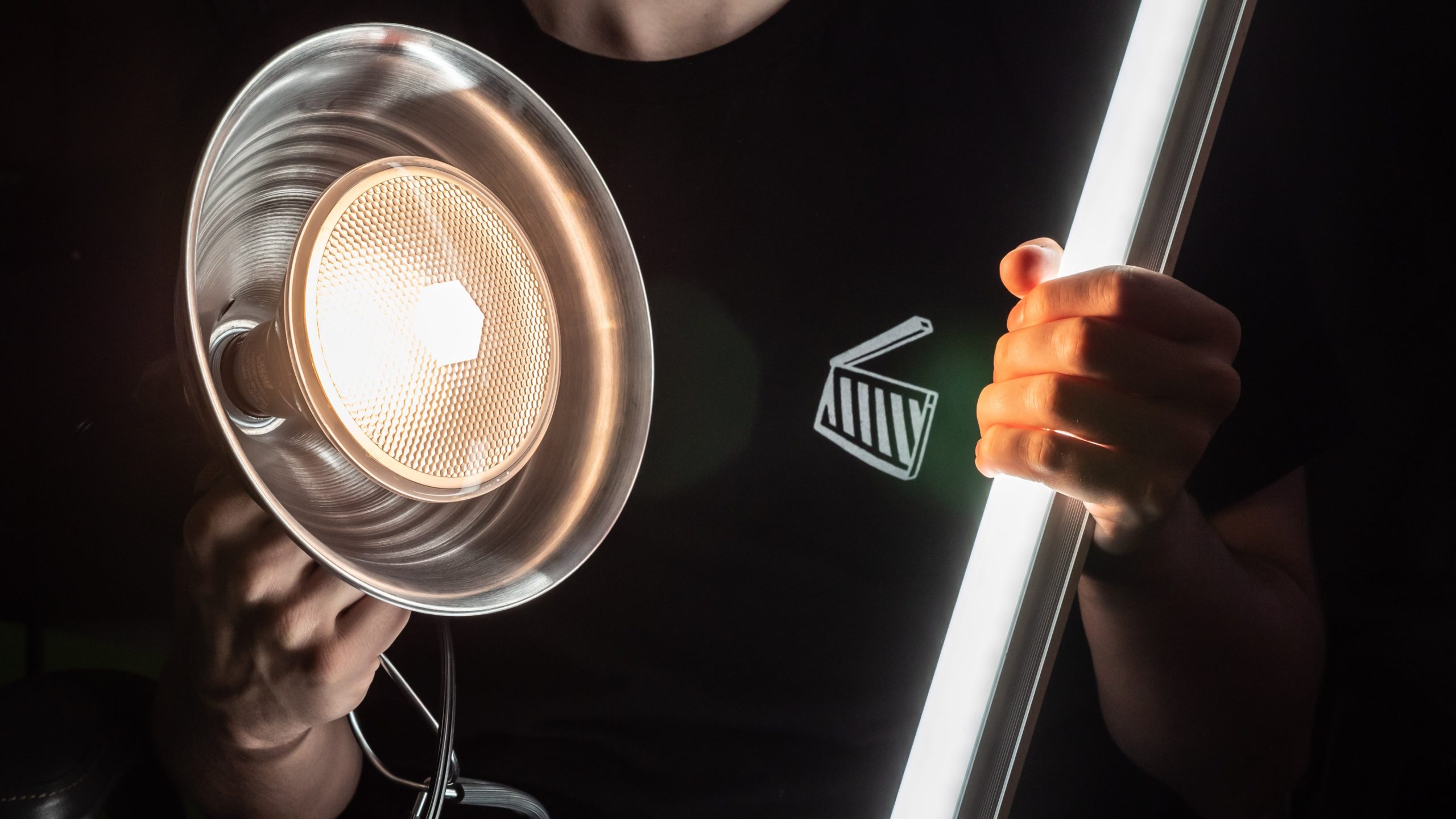What technology is available to power lighting on off-grid film sets?
Film production requires a diverse range of lighting. Every light has its own purpose on set and requires a specific and reliable power draw. From large 18K HMI lights to small 125W pocket par lights, productions require a variety of options to power different lights in multiple areas. Failure to maintain a consistent power draw could lead to re-shooting, which causes unpredicted costs for the production. So how do you power the lights on a film set in remote locations? By understanding how various lights draw power and where power will be used in these locations, lighting technicians can optimize their energy usage with green technology where possible, instead of using low-efficiency 1400 Amp diesel generators across the board.
Lighting sets the tone for a film
Why is having a proper lighting setup so crucial? The human eye can pick up details that cameras aren’t capable of, and the effective use of lighting helps images come across more accurately. Lighting also communicates the mood and atmosphere to the audience and gives producers opportunities to make scenes more dynamic.
With the evolution of lighting in film, producers have gone from relying on natural light to being able to create whatever scene effect they want, including dynamic colour contrast, or fabricating rays of sun when it’s overcast.
Without well thought-out lighting in film production, you risk flat, lifeless images, Properly set up studio light can help convey the drama and emotion that filmmakers strive for.
What kind of lights are used in film making?
Film production requires many types of lights used to create different effects. Whether the set requires natural skin tones or a colorful display, there is a light to get the job done! The four main lights used are tungsten, HMI (Hydrargyrum Medium-Arc Iodide), fluorescent, and LED. Each of these lights produces different levels and types of light and require different levels of power. Knowing the power requirements of each light allows gaffers to make educated decisions about right-sizing their portable power generation equipment.

Tungsten lighting is a form of incandescent illumination that incorporates pressurized halogen gas. The tungsten light creates beautiful images and was the only option available for many years. Although the bulb life and fragility can be seen as a risk, many producers prefer to use tungsten lights to produce accurate skin tones and light large indoor locations.

HMIs are bright and relatively efficient, and because of this, they are by far the most popular type of light used in today’s film and TV industry when combined with natural daylight. But they are more complex technology than tungsten, meaning they are far more expensive, and more prone to problems. HMI lights are available in wattages ranging from 200W to 18K. Smaller models are common on low budget sets as they can run off battery or domestic power; whereas 18K lights require a larger power source so are typically used on medium to high budget productions.

Fluorescent lights are a cheap way to get started when making films, and they are more efficient than incandescent lighting. Fluorescent lighting is achieved by layering tubes until the desired brightness is reached. Sometimes using fluorescent raises concerns when filming, experience flickering that disrupts the shot, this can be mitigated by matching the shutter speed to the frequency of the light. The benefits of fluorescent lights are their availability and minimal power requirements.

LED lights are taking over the film industry, providing many benefits over incandescent, fluorescent and halogen options. LED lights require 50% less power, making them more energy-efficient which allows producers to utilize batteries as a power source. Traditional lighting is known for being very hot. On the other hand, LED emits no heat, keeping the film set cooler and reducing the need for additional air conditioning units. LEDs are also very durable and breakage-resistant as there are no filaments or glass enclosures to worry about. One of the biggest benefits of the LED light is the available colour spectrum. LED lights are likely going to continue to grow in popularity as the technology becomes more available.
How do you efficiently power varied lighting in remote areas?

The Valid Power System (VPS) is designed to for versatility and sustainability in the film industry. For every light or combination of lights, there is a VPS unit that is appropriate for the job. When working with remote locations, producers must bring in power generation equipment to run all the lights. Valid’s line of power generation and distribution equipment allows gaffers to create custom power grids within each production. By optimizing each light’s power source, productions will reduce energy waste and emission output, and save on overall production costs.
The table below shows how many hours VPS units can power various lights used the film industry. The VPS battery packs can take on the different smaller loads and be connected to a VPS Studio generator for charging. This reduces the number of diesel generators required and ensures that generators are always run at optimal efficiency.

Providing solutions for powering lights on remote film sets
Efficiently powered lighting is key to reduced energy waste in film productions. The norm used to be overpowered sets, with enough diesel generators brought in to turn on all the lights for the entire day. Now producers are making an effort to scale down their energy usage, utilizing green technology to optimize each light’s specific power equipment requirements.
Valid continues to work with industry professionals to keep pace with lighting trends and provide state-of-the-art power generation and distribution equipment.

